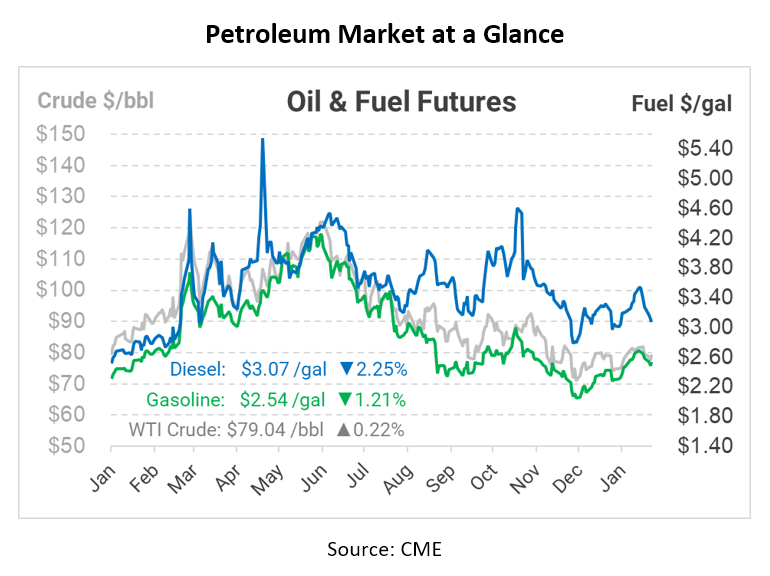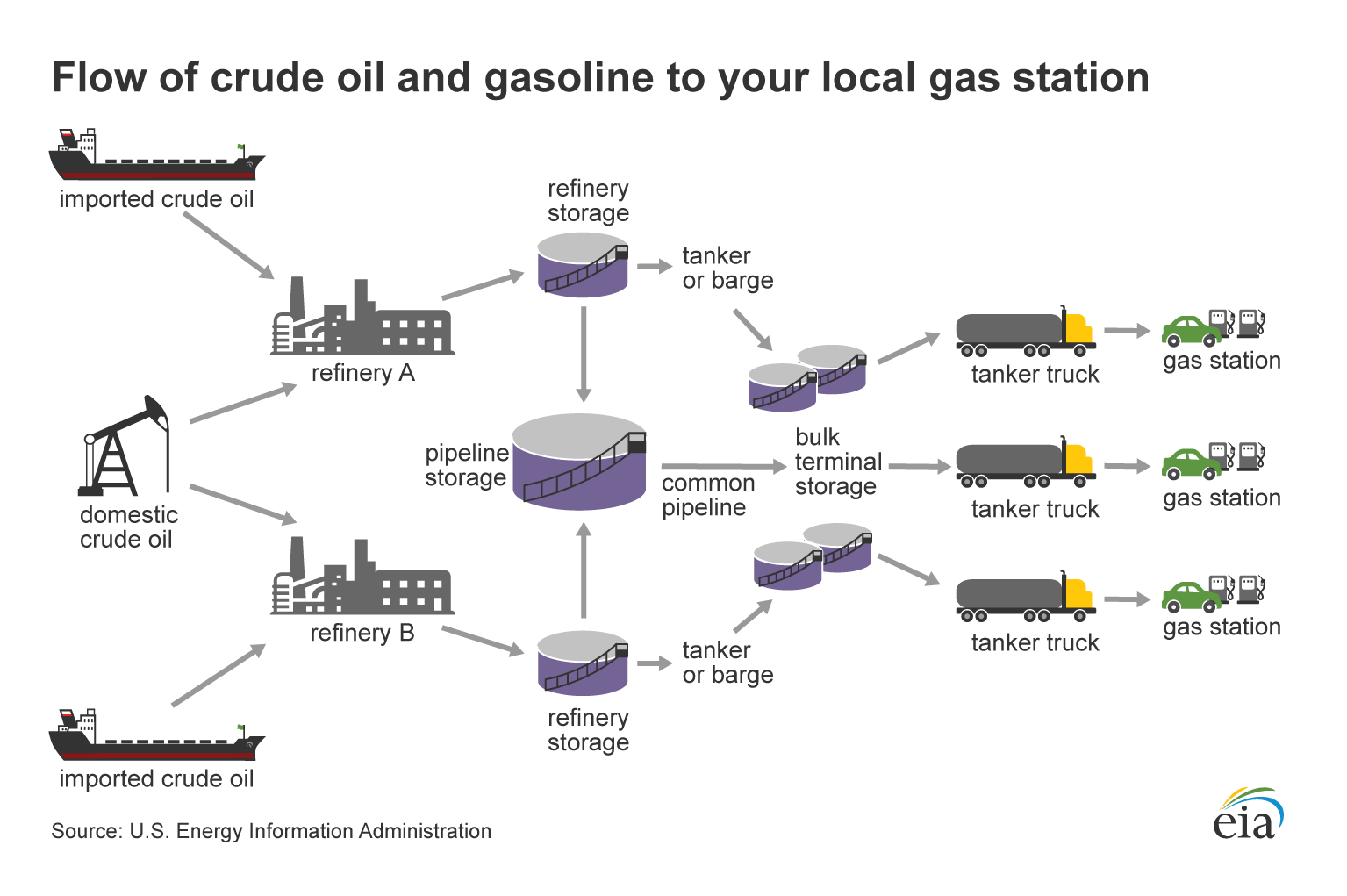
What Is It – Fuel Terminal
Fuel terminals are an important player in the transportation of fuel, moving products to end users. They are considered part of the “midstream” and “downstream” portions of the supply chain. Before we go into the specifics of a fuel terminal, let’s first define what it is.
What is a Fuel Terminal?
Fuel terminals are facilities where large quantities of various types of fuels, such as gasoline, diesel, and jet fuel, are stored and distributed. The fuel stored at terminals contributes to overall US oil inventory levels. The fuels are usually transported to the terminal by pipeline, rail, barge, and occasionally tanker truck, and then stored in large tanks. From there, the finished transportation fuels are distributed to other locations, such as gas stations and other end users, through a network of pipelines, tanker trucks, or railcars. The fuel is delivered to a truck by a loading arm that draws fuel from a variety of tanks.
A fuel terminal is usually operated by oil companies, fuel distributors, or terminal operators, and they are generally located near major transportation routes, such as highways or rail lines, to facilitate easy distribution. Some terminals also have the capability to blend different types of fuels or add additives to meet specific customer requirements. Equipment that can be found at terminals includes pipes, valves, meters, pumps, skids for unloading trucks and trains, and tanks for holding liquids.
Safety is a key concern at terminals as the fuels stored there are flammable and potentially explosive. Because of this, fuel terminals are typically subject to strict safety regulations and are required to have emergency response plans in place.
How Does Fuel Get to Terminals?
In most parts of the country, pipelines are used to bring fuel to different fuel terminals. Those pipelines may transport just one product – meaning the terminal simply needs to open the hatches to receive product and close it when done – or they may transport different products in co-mingled batches. For co-mingled deliveries to a terminal, timing is important – a batch of diesel could be followed immediately by gasoline, so the valve must be closed at precisely the right time to prevent contamination and off-spec fuel. Most of this timing occurs automatically, though during emergency situations such as the Colonial Pipeline hack in 2021, this can also occur manually.
How Many Terminals Are in the US?
According to the Oil Price Information Service, there are 1,450 terminals in the US and 1,296 storing transportation fuels. The US has a total terminal capacity of 911 million barrels for all products. Terminals are usually clustered into areas with access to pipelines and within certain proximities to customers. They are also found in harbors or coastal areas to receive the shipments of fuels by sea.
How Much Fuel Can a Terminal Store?
The amount of fuel a terminal can store will vary widely depending on the specific design and capacity of the local area. Some terminals are relatively small and only have a few storage tanks with capacities of a few thousand gallons. In comparison, others may be very large and have dozens or even hundreds of tanks with capacities of several million gallons. The average terminal in the US has 19 tanks on site.
In general, fuel terminals are meant to store large volumes of fuel to meet the demands of the local market, surrounding regions, and even other countries, especially the ones in coastal areas. Storage capacity can also depend on the type of fuel that the facility contains. For example, terminals that store gasoline may have smaller storage tanks than terminals that store heavier substances. In addition, a large portion of the terminal capacity is leased to customers with long-term contracts for specific storage volumes.
This article is part of Daily Market News & Insights
Tagged:
MARKET CONDITION REPORT - DISCLAIMER
The information contained herein is derived from sources believed to be reliable; however, this information is not guaranteed as to its accuracy or completeness. Furthermore, no responsibility is assumed for use of this material and no express or implied warranties or guarantees are made. This material and any view or comment expressed herein are provided for informational purposes only and should not be construed in any way as an inducement or recommendation to buy or sell products, commodity futures or options contracts.








